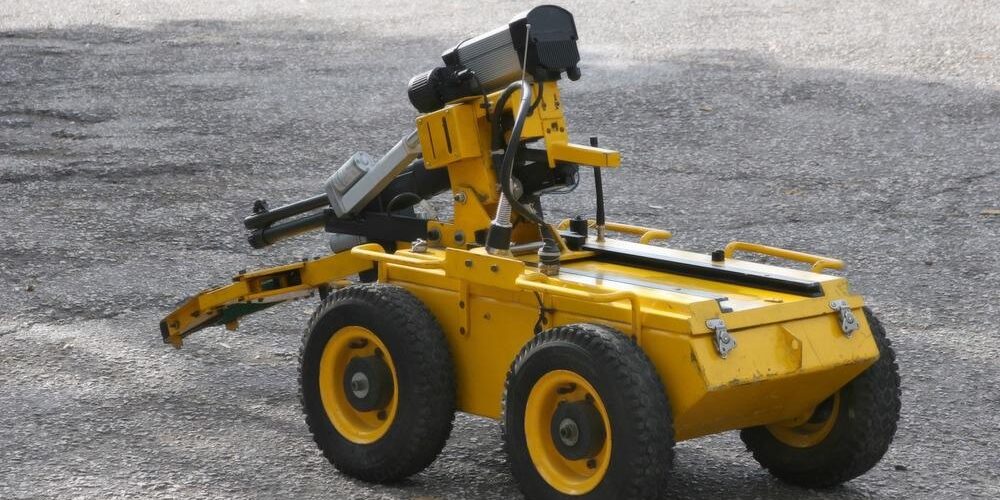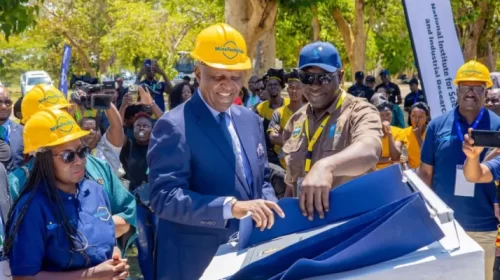How Autonomous Systems are Transforming the Mining Industry
Even before COVID-19, many industries were facing significant labor shortages and the mining industry has been no exception. Mining tends to have difficulty attracting workers because it typically involves difficult and dangerous work. Mines are often located in remote areas, and it is common for miners to work away from home for a month or longer. Furthermore, miners work in hot temperatures and small spaces, and mine collapses can be deadly. In the United States, approximately 1,000 people die in mines every year, and some estimates have pegged the annual worldwide toll at around 12,000 deaths.

Image Credit: Stavchansky Yakov/Shutterstock.com
How Autonomous Systems are Revolutionizing the Mining Sector
The mineral resources we need for power and technology are increasingly located in remote, hard-to-reach areas. These working conditions in remote operations can be dangerous, and that level of personal risk makes it difficult for the industry to recruit.
Increasingly, the industry has been turning to autonomous systems to address its labor issues. When there are no human workers in an underground mine, there is no way for a collapse to turn deadly.
On top of addressing labor issues, autonomous systems can be more efficient and facilitate around-the-clock operations. With the mining industry workforce tending to grow older by the year, mining operations are finding that autonomous systems are an effective way to address a labor issue that seems to be getting worse.
As such, makers of mining equipment have been evolving their offerings to include automated features and even equipment that leverages artificial intelligence. In addition to commercially available offerings, there are several research and development initiatives currently underway that are focused on developing more sophisticated autonomous mining systems.Mining Industry — The Future is Automation
Video Credit: ABB/Youtube.com
Transitioning to an Autonomous Operation in Mining Operations
An autonomous mining operation is built upon an interconnected digital network made up of equipment and devices, commonly referred to as an Internet of Things (IoT). Once an IoT has been set up at an operation, it enables all kinds of functionality.
An interconnected mine could protect miners with a network of sensors capable of providing early warnings. For example, gas sensors with automated functionality could detect the gas leak before it becomes dangerous and evacuate miners before an explosion can occur.
An interconnected network can also be used to enable both remote and fully automated operations. With remote operations, a worker can coordinate multiple vehicles and sets of equipment using just one set of controls. Most often seen in open pit mining, autonomous mining operations involve driverless trucks moving materials based on GPS coordinates and automated loading equipment depositing materials into these trucks.Find out more: Global positioning systems (GPS) on the market today
Surveillance of Mining Operations
One of the most visible examples of autonomous systems transforming the mining industry is the use of aerial drones for surveillance. Many open-pit mining operations use drones to view the status of a quarry, waste piles, growing environmental issues, and mining infrastructure.
Using artificial intelligence, a mining operation can gain rapid insights based on the automated analysis of imagery captured by aerial drones. This automated system can provide 24-7 surveillance of operations in a way that would not be feasible using humans.
Unable to use aerial drones, underground mines use an automated camera system for surveillance of operations. These automated systems also employ artificial intelligence to keep an eye on mining activities and provide an early warning system. Underground mines can also use an automated sensor system to identify concerning patterns of activity found in tremors and temperature shifts.
Resource Discovery
The mining resources from the ground require a significant amount of digging and extraction operations. In addition to that, debris and waste must be properly disposed of based on environmental regulations.
Because of these enormous costs, accurate resource discovery is essential to maintaining efficiency and minimizing environmental impacts. Autonomous systems powered by AI have made resource discovery better and more precise. These systems use computer vision, pattern identification, and predictive analysis to detect precisely where resources will be found.
Robot Co-Working: Early Inspection of New Mining Operations
Current technology cannot fully automate mining. While automated equipment and systems have been able to take over a significant amount of work, humans are still necessary to make decisions and predictions.
With humans being essential in mining operations for the foreseeable future, some research programs are developing robotic equipment that can work alongside humans.
One system being developed by the Council for Scientific and Industrial Research (CSIR) in South Africa focuses on the early inspection of a new mining operation. Traditionally, human minors have had to conduct acoustic and visual analysis to identify a loose rock, and this can be a hazardous undertaking.
Using a suite of digital sensor devices and neural networks, the platform being developed can enter an unstable underground environment and detect potentially dangerous situations.
Exploring Old Flooded Mines
There has been significant interest in exploring old, abandoned mines, many of which have flooded since ending operations.
Interest in these old mines has been driven by a shift in the mining industry that started in the mid-20th century. The dawn of digital technology has sparked an increased need for rare earth elements. Many old mining operations bypass these minerals in favor of other resources, and untold amounts of rare earth elements are simply sitting in old mines, waiting to be rediscovered.
To facilitate the exploration of flooded, abandoned mines, a European consortium is currently developing a platform of automated robots called UNEXMiN (Underwater Explorer for Flooded Mines). The platform’s UX-1 robot uses acoustic cameras, sonar, laser scanners, and a control system to create 3D maps of flooded mines.
While the decision to reopen a mine cannot be made purely on the information provided by the UX-1 robot, the UNEXMiN platform holds significant promise for the continued development of automated mining operations.
![]()





